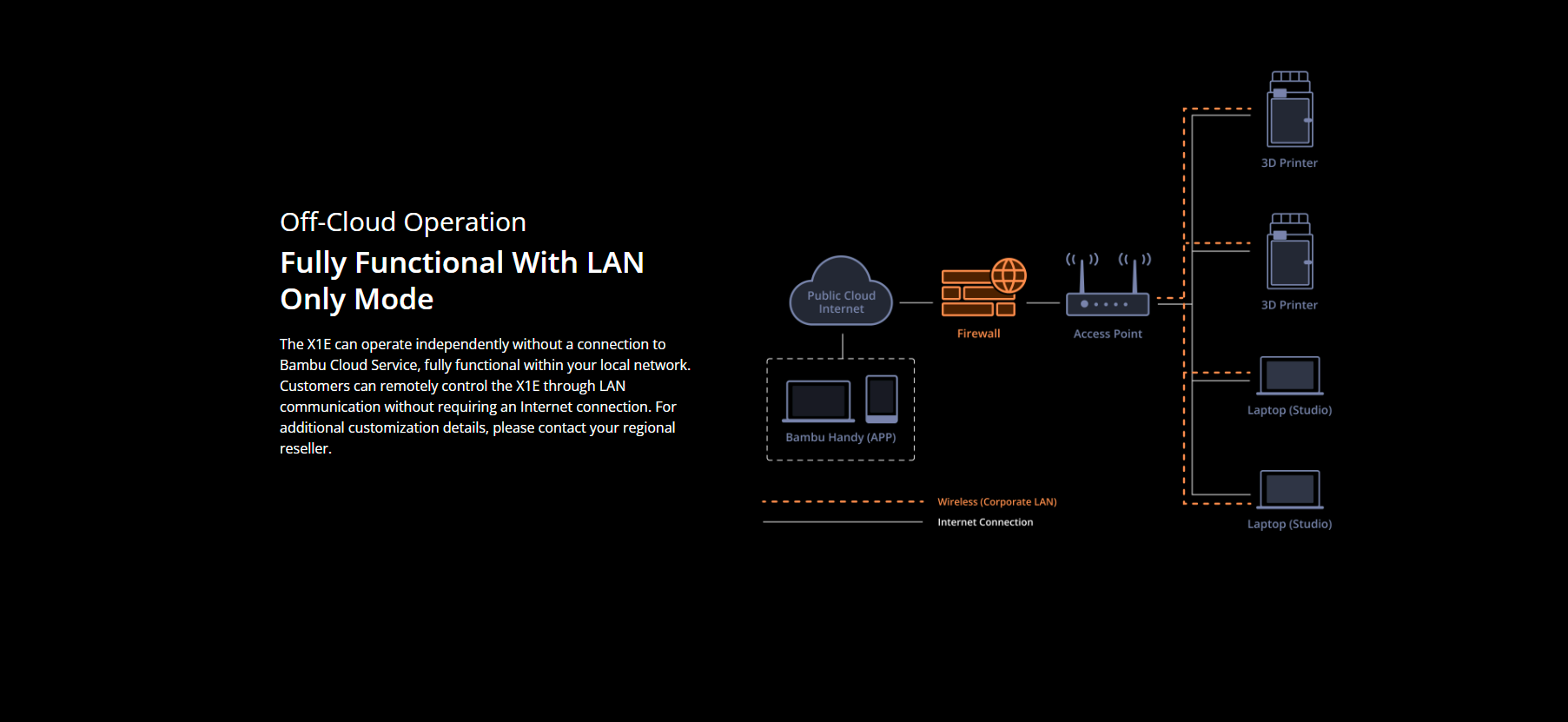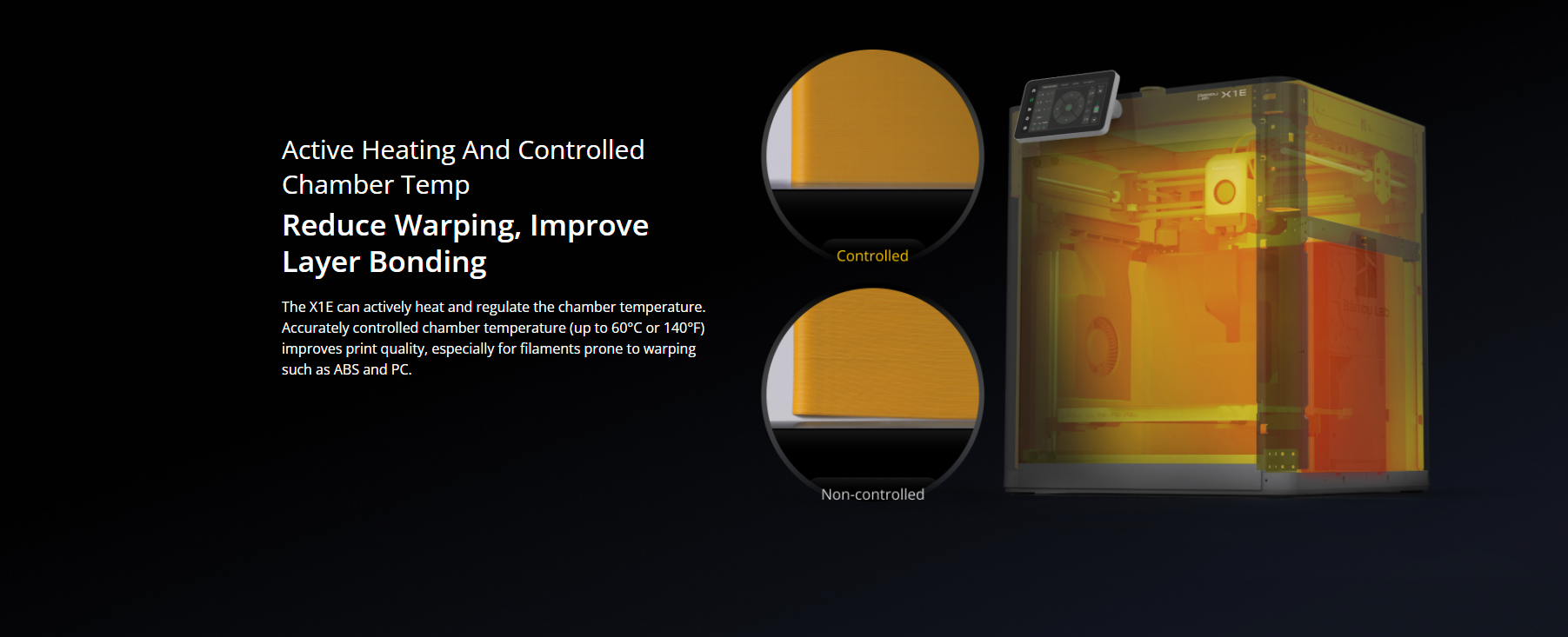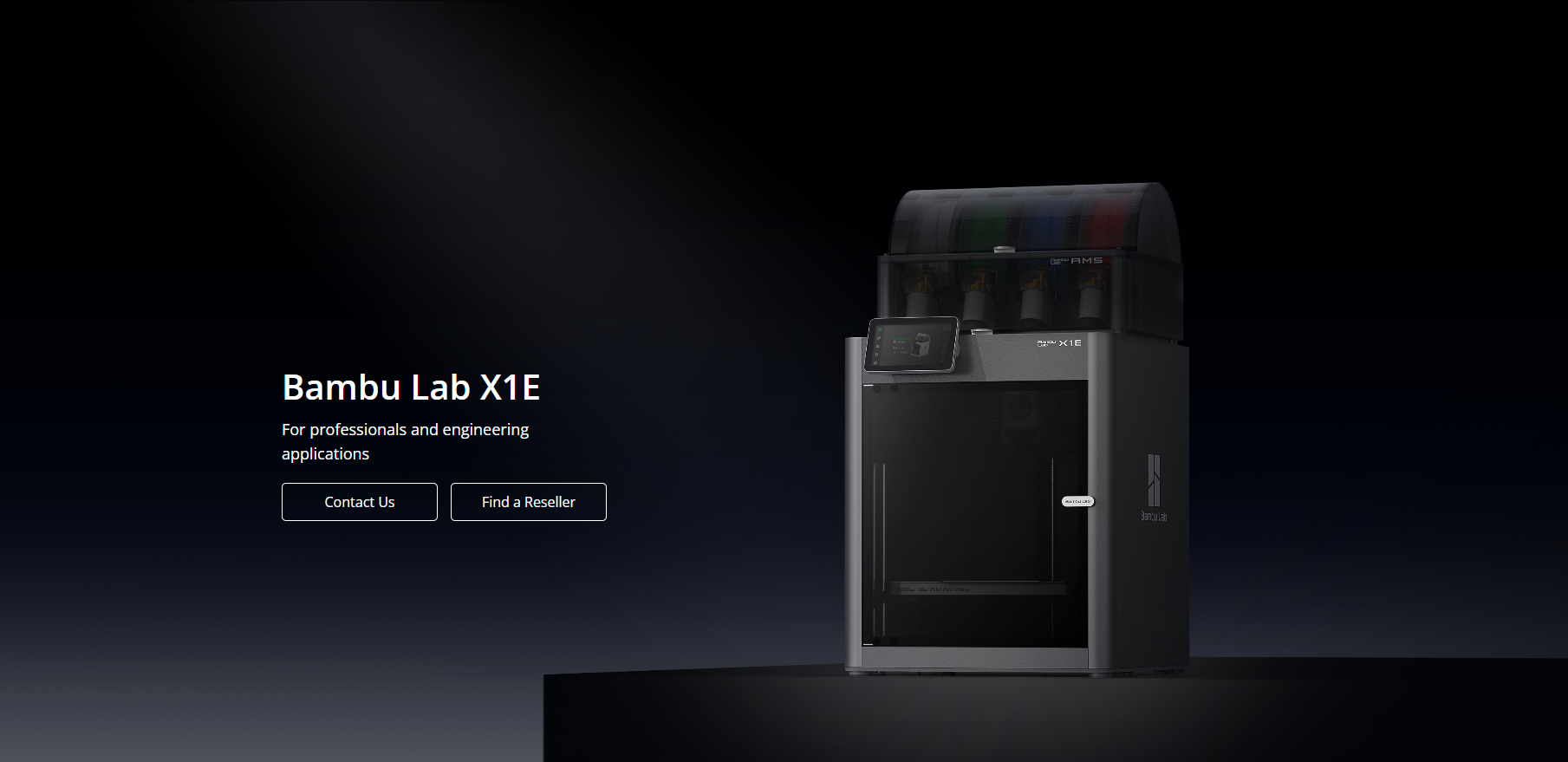Is 3D Printing Complete for now?
With the new Bambu Lab X1E, is 3D Printing complete for now?
With Bambulabs subtle release of the X1E I would argue we've fully made the transition into the “next generation” 3D Printing. Don’t we have everything we, the market asked for?
The new bambu lab X1E as you might know brings secure offline printing to the table. Together with a actively heated chamber and an extra safe filtration system.
That’s about it.
Oh, and an extra freaking $1050 price tag, compared to the X1C!
Targeting enterprise customers
You may have seen that the X1E is only available through resellers or direct contact with a sales rep at Bambu Labs. This is probably due to the fact that they want to give local, and great support. This is expected from all “enterprise” customers.
It makes sense. You want a local reseller to quickly ship stocked filament or hot-ends, maybe even come and change them for you.
Reseller partners
The X1E price tag actually makes a bit sense when you consider there don’t seem to have been much margin available for resellers on P1P for example.
There is probably only a 25-40% margin for bambu labs themselves considering how small they were as a company and what the price is.
So when you add a reseller that needs to cover cost of selling, stock, shipping, support, warranty and just making profit, that’s not a lot per printer.
There for, it’s reasonable to think that the $1050 extra is partially just margin to resellers, being able to support the printer and cover some parts as well.
The extra hardware for wifi and LAN (a new motherboard?) and a heating fan, hot end, filter and temperature control sensor might cost $100-200 in manufacturing as well.
For the customers targeted, the extra price is nothing special when compared to an Ultimaker S5 or Stratasys systems, which might have been the option until now considering security and some higher-end material choices.
Why 3D Printing is complete for now
Ever since the Bambu lab X1C came out and blew everyone faces off with proper fast printing speeds and reliable multi color 3D printing, we, the market has asked for a cheaper alternative.
Bambu Labs somehow managed to cut cost and introduced the P1P 3D Printer. A budget option with mostly the same features, but no enclosure.
Then we wanted better enclosure that could actually work with better materials, and the bambu lab P1S was born.
Then we wanted a BIGGER printer! However, we didn’t get that.
Well we did, but it was the Creality K1 Max and although most of bambu lab community didn’t want it, the market did, and it’s very successful. Much more so than the K1, that may have lost out to the P1S. But for build size, the Creality K1 max does the job. There’s a big drawback though; No AMS.
We also got the next generation Ender 3D Printers that were tuned for faster printing.
So now all “segments” expect professionals were up to SPEED, get the pun?
Then we didn’t get what we wanted, but the market did:
A cheaper multi-color option with high speed printing. The Bambu Lab A1. I got mine on the way, so stay tuned to see me test it versus the P1S, Adventurer 5M pro and others!
Then we finally got what the professional, enterprise customers wanted, the Bambu Lab X1E and it’s enterprise targeted features for this high-speed generation 3D Printers.
So now it appears that in this high-speed 3D Printing era we have a complete set of options.
Budget options for multi color printing. Options for medium-size printers that are fast and reliable. A larger, Creality K1 Max type printer and finally options for enterprise who wants to enter the fast FDM-market.
I can’t wait for what the next generation of 3D Printers bring!





